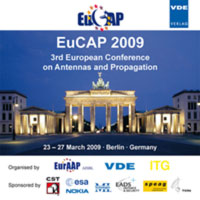Radiation by Conformal Patch Antennas on a Magneto-dielectric, Low-density Material
Konferenz: EuCAP 2009 - 3rd European Conference on Antennas and Propagation
23.03.2009 - 27.03.2009 in Berlin, Germany
Tagungsband: EuCAP 2009
Seiten: 3Sprache: EnglischTyp: PDF
Persönliche VDE-Mitglieder erhalten auf diesen Artikel 10% Rabatt
Autoren:
Kempel, Leo; Crowgey, Ben (Electrical and Computer Engineering, Michigan State University, East Lansing, MI, USA)
Xiao, John (Physics, University of Delaware, Newark, DE, USA)
Inhalt:
Conformal microstrip patch antennas have been traditionally printed on a very low-loss dielectric material, such as PTFE or a similar polymer. These materials have the advantage that the substrate is flexible (or at least can be moulded to shape); however, they have the disadvantage that the relative permeability is relatively low and hence patch antennas are relatively large for VHF operation. This becomes particularly significant for curved installations since the aperture will wrap around a significant portion of the structure thereby altering the radiation pattern (compared to the flat case) and making azimuth arraying challenging. Ceramic inclusions can be added to a polymer (such as PTFE) to increase the relative permeability at the cost of reduce antenna instantaneous bandwidth, reduced flexibility, and a modestly increased loss. In this paper, evaluation of the performance of a magneto-dielectric nanocomposite material as a potential conformal substrate is presented. The material has the advantage of increased operational bandwidth as compared to a traditional dielectric substrate for a comparable physical aperture size.


